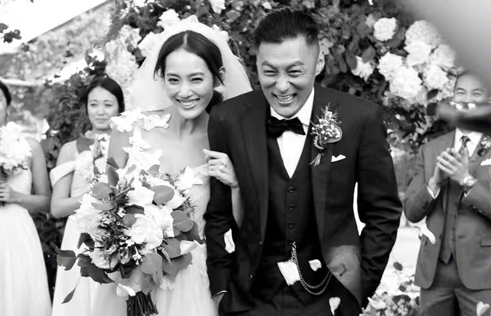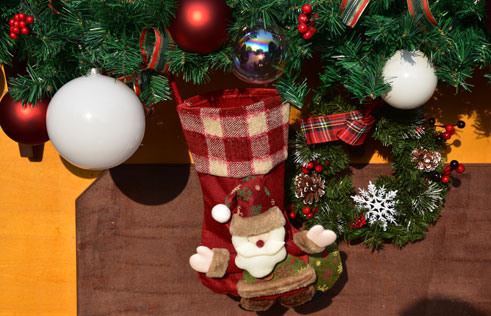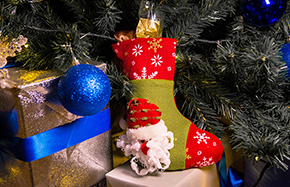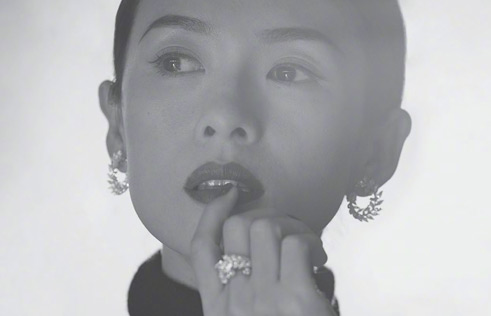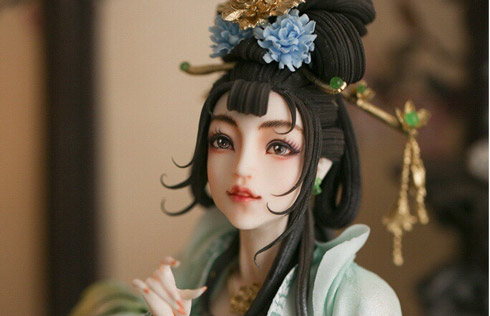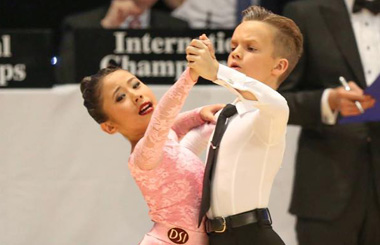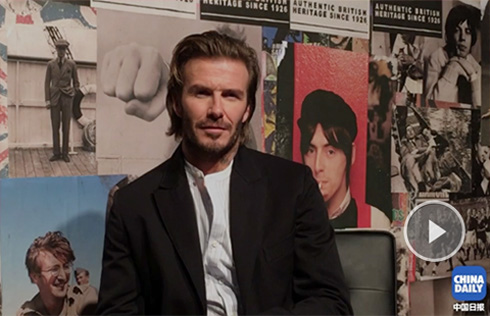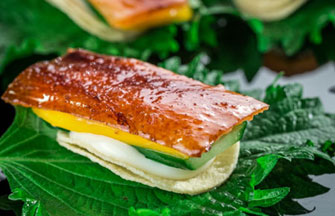Welcoming the rabbit
Malaysia
Time to eat out, talk and catch up
By Esther Auyong
In Malaysia, food is a big part of the Chinese New Year. But sadly, the traditional new year's eve reunion dinner is fast becoming a rare sight in homes - for practical reasons.
For Malaysian Freddy Lee, 30, the dinner is held at a restaurant in order to reap the most out of any available time to catch up with his family.
The business development director returns to Kuala Lumpur, every Chinese New Year, from Singapore where he is based. "With my parents getting older and kids like us (he and his two brothers) away most of the time, it makes sense not to spend too much time in preparing a meal and to spend more time talking and catching up. Things have definitely become more commercial, and the spirit of the festival is also less important now. The real benefit is being able to see our loved ones and spend some quality time together," Lee says.
However, he admits that the lavish spread of home-cooked food - "fish is a must, so is chicken and always something luxurious, like abalone" - of his childhood "is always missed".
"Perhaps when I have my own family, it will revert to the old times, as there is always that 'tradition' that one wants to pass on," he says.
For many Malaysian Chinese, whether they return home from overseas or from big cities where they are working, the Chinese New always been about spending time with the family.
"On the first day, all the kids wake up early. My parents made it a point that we wear our new, usually red or orange-themed clothes. We then go into our parents' room to wish them gong xi fa cai, and enthusiastically receive ang pao (red packets) from them.
"It is precisely the long duration away from home, for some workers in the city that keeps the Chinese New Year spirit alive in Malaysian states," says retiree Edward Yong, 56.
The balik kampung (return to hometown) rush, especially from Kuala Lumpur to other states, would start as early as a few days before Chinese New Year, with many main highways out of the capital choc-a-block with traffic. Bus and rail tickets out of the city are bought a few months before, with locals of other races also taking the opportunity to visit their families during the public holiday period.
While Kuala Lumpur isn't a complete ghost town, it will be significantly quieter with many shops and restaurants eschewing any potential business to bond with friends and family. As they say, home, especially during the holidays, is truly where the heart is - Chinese New Year or not.
Esther AuYong is a Singapore-based writer for China Daily Asia Weekly.
Philippines
Blend of Buddhism with Spanish Catholic mores
By Kitty Go
'Four hundred years in a convent (as a Spanish colony) and 50 years in Hollywood (as an American colony)." This popular quote sums up Philippine culture, which also embraces the Chinese, who were there trading all along the way before the 15th century when the Spaniards arrived.
There is a Chinese belief with Buddhist origins that lighting incense in the new year brings luck and blessings. But the Philippine Chinese take it a step "holier" by combining Buddhism with the Spanish Catholic custom of visiting churches.
"Some Chinese also do a kind of visita iglesia (meaning church visit). They go to several temples on new year's eve, offer incense and pray for blessings," says Ari Dy, a Catholic priest with the Society of Jesus.
The Chinese, who are born and raised in the Philippines, are locally called Chinoys (a slang combining the words "Chino" for Chinese and "Pinoy" for Philippine people in Tagalog). The Chinoys celebrate the Chinese New Year with a big meal, which includes noodles (symbolizing long life) and a whole fish (signifying prosperity). Other traditions include ancestral worship and distribution of ang pao or red packets. Tikoy or sweet sticky rice cakes are eaten and given as gifts. Philippine people, in fact, expect these from their Chinoy friends.
Chinese New Year is not a public holiday in the Philippines but Chinese schools celebrate it with cultural celebrations. The Jesuit-run Catholic Xavier School, one of the country's most prestigious high schools, conducts a mass in Mandarin, and organizes a program of Chinese arts and performances. The school is decorated with Chinese lanterns in the shape of pineapples. "The Hokkien term for pineapple sounds the same as 'prosperity will come'," explains Dy. Hokkien is a dialect spoken by most Philippine Chinese.
Things are changing in this country, from dragon dances in Chinatowns to big celebrations sponsored by businesses and sanctioned by the government. Tulay Digest, a fortnightly community newspaper says there will be an exhibition on Chinese-Philippine relations in Manila's Mall of Asia by Bahay Tsinoy Museum. The event includes a photo exhibition on Jiangsu province.
Tayabas town in central Philippines organizes a Catholic mass, an address by its mayor, a historical talk and exhibition, language tutorials, fireworks, dances and Chinese movies. All these are to honor the first four Chinese families of settlers. Northern city of Baguio organizes a parade in which prominent Chinese people and government officials take part.
"Due to a combination of factors such as the rise of China, including the popularity of all things Chinese in the media, Chinese-ness has become much more mainstream," Dy says. "There is even a bill moved in Congress to declare the lunar new year a public holiday. Things are a lot different from the days when it was an all-Chinese affair only. Chinese new year is now a public celebration in the Philippines," Dy says.
Kitty Go is a Tokyo-based writer for China Daily Asia Weekly.
Singapore
Inherent dichotomy of reunion dinner
By Esther Auyong
Most still believe that Chinese New Year celebrations start on the eve of the first day of the lunar calendar. But Peter Wee, 65, begins his rituals and traditions during the Dongzhi Festival (Winter Solstice Festival). Traditionally, this is a time when families in China gather and the tangyuan (glutinous rice balls), colored pink and white, is made and eaten.
"But first, it has to be offered to our ancestors, the kitchen God and the deity of the house. Then, two tangyuan will be placed on each side of the front door," explains the businessman.
Wee, a fourth generation Peranakan - descendants of 15th and 16th century Chinese immigrants, mostly of Hokkien ancestry, who have inter-married to Malay and Indonesian spouses in the Nusantara region - has been running the two-story Katong Antique House, a part-shop, part-Peranakan museum for 30 years.
Needless to say, for him, the reunion dinner on Chinese New Year's eve is another elaborate and extremely important tradition.
"We set up the ancestral altar around 11am. We place Peranakan food like buah keluak and pongteh, fruits and wine on it. This is an act of remembering our past. The family comes together, and pays respect to our ancestors," he says.
The family then eats the same food for their reunion dinner in the evening, which, Wee says, "has to be held at home". He adds that bringing the celebration out of the home, "like how hotels and restaurants pluck families away with their convenient reunion dinner sets, with their modern food", takes away the meaning of the tradition.
By "modern food", Wee means the composition of these contemporary reunion dinners, which tend to follow culinary trends, most likely to please the taste buds of a well-traveled younger generation. The president of the Peranakan Association of Singapore cites the yu sheng, a raw fish salad that's a symbol of abundance and prosperity - a common sight during the Chinese New Year meals in Singapore - as an example. While versions of it are taught to have existed in China, the current form of yu sheng was invented and popularized in Singapore in the 1960s.
"Besides having dinner at home, it is vital that people eat traditional food," he says, lamenting that modernization has somewhat eroded the fascinating culture of the Peranakans. He observes that "young people these days are losing a sense of history and culture".
Still, he admits that "a living culture is something that's constantly changing". "What we can do is make sure there is a record of the past, of our traditions and rituals," Wee says.
Esther AuYong is a Singapore-based writer for China Daily Asia Weekly.



